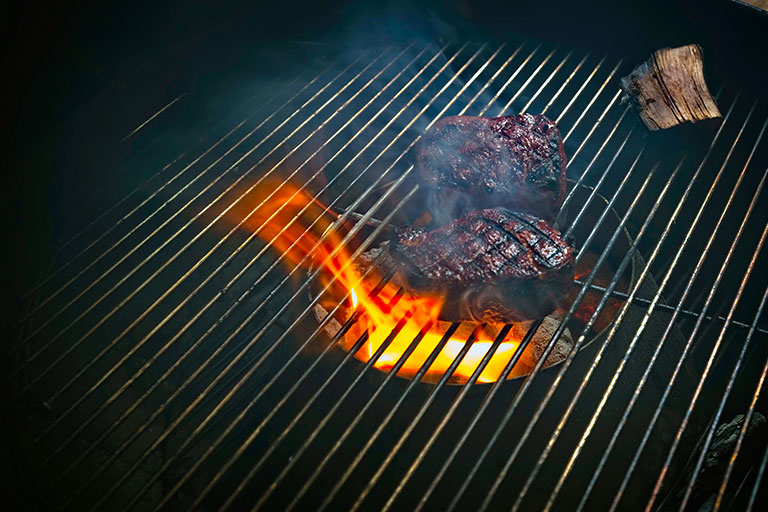By Dennis Smith
If, as the television jingle says, “The best part of waking up is Folgers in your cup,” then “The best part of big game hunting is elk steaks on the barbie.”
It’s a day in late December and colder than a well digger’s butt. The sky is the color of molten pewter, snowflakes big as quarters are falling and the air is so quiet you swear you can hear them hissing through the pine boughs in the backyard. The fire dancing in the family room hearth warms your bones, while a pair of 2-inch-thick loin steaks sizzle in a swirl of applewood smoke and yellow-orange flames on the charcoal grill outside the patio door. Life is good, you think, and you’d be right.
Those steaks came from a cow elk one of the boys shot on the mountain behind son Dave’s cabin earlier in the fall. We field dressed her and got her down to the cabin quickly on an all-terrain vehicle, but it took the neighbor from the other side of the hill to come over with his backhoe to help us hang the carcass for aging, skinning and prepping. Once that was done, we put the quarters on ice to keep cool and begin the arduous but rewarding task of “making meat,” as my little granddaughter calls it.
Over the years, processing our own wild game has become a full-blown family affair with all four grandkids taking part in the work. My sons and I break down the major cuts and set up the equipment. The kids run the mixer and grinder, man the grill or skillet for taste tests and, once the proper ratio of spices is agreed on, help with the wrapping, labeling and cleanup.
They like making sausages and burgers the most, and even came up with a couple of their own recipes. They definitely have fun, but this is as much an educational process as it is an entertaining one for them. Apart from learning where their food really comes from and how it’s processed, they see firsthand what muscles, bones, tendons and ligaments actually look like and how they work. Brandon announced this year he thought it would be much more useful (and fun) if schools would teach kids how to butcher a fresh animal carcass instead of dissecting a pickled frog. Makes sense to me.
Biology aside, there’s a fair amount of practical math involved here, too: computing fat to lean ratios, usually by weight, but sometimes by dry volume; converting dry and liquid measurement equivalents — cups to ounces, ounces to teaspoons or pounds and that sort of thing. It’s amazing to see how eager kids can be to work fractions when they realize it can dramatically affect the taste of their venison burgers or their favorite breakfast sausage.
As much as we enjoy hunting and camping together, it seems we get almost as big a kick out of making our own meat. In the end, though, the best part of it all might just be watching those big steaks sizzle on the barbie on a cold winter day.

